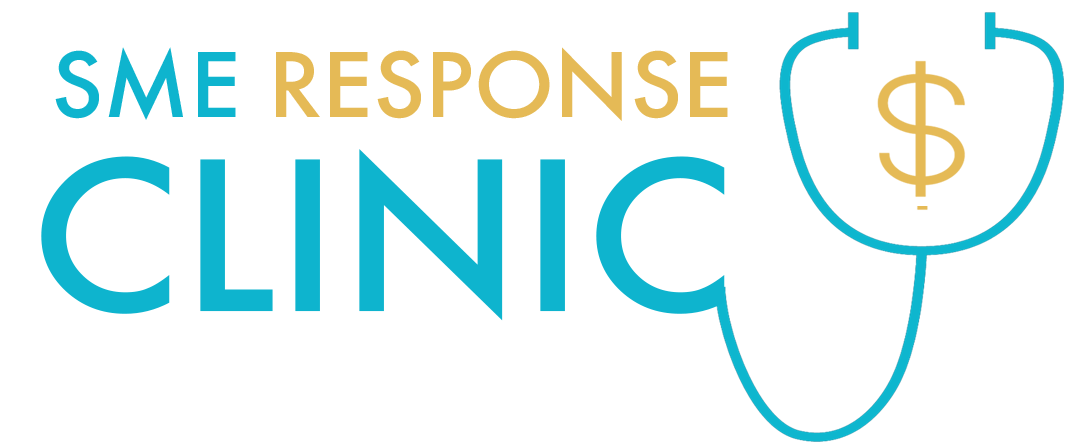Nurturing Mental Wellbeing: Insights from Entrepreneurs
Nurturing Mental Wellbeing: Insights from Entrepreneurs
We have the privilege of hearing from entrepreneurs who have grappled with the challenges of maintaining their mental health amidst the demands of their ventures. These firsthand accounts will provide valuable insights and practical strategies for coping with the unique pressures entrepreneurs face.
Hearing from Entrepreneurs: Shared Experiences in Mental Wellbeing
Nurturing Mental Wellness: Insights from Entrepreneur Constanza

Nurturing Mental Wellness: Insights from Entrepreneur Constanza
Being an entrepreneur is an exhilarating journey filled with opportunities, challenges, and the pursuit of success. However, amidst the excitement, it is crucial to prioritize mental wellness. In this article, we dive into the experiences and advice of Constanza, an entrepreneur who has successfully navigated the business world while maintaining her mental well-being.
Originally from Italy, Constanza Casullo has managed her day job as an office worker and established a remote business called Devkenya. Devkenya aims to connect Kenyan web developers with clients across the African continent, focusing on Rwanda, Uganda, and Tanzania. Their services range from company websites and e-commerce platforms to mobile apps, SEO, and website redesign.
When asked about the rewards and challenges of running her own business, Constanza acknowledges the positive and negative aspects. On the positive side, she finds immense satisfaction in witnessing a website come to life and observing how it benefits businesses. However, she also highlights the constant time constraints, expressing a desire for more than 24 hours daily. This limitation can be frustrating, but Constanza remains determined to overcome it.
A vision of the future drives Constanza’s entrepreneurial journey. She envisions a world where the efforts she puts into her business will be worthwhile. She believes East Africa will significantly shape this new world with its burgeoning tech and entrepreneurial ecosystem.
Drawing from her experiences, Constanza offers valuable advice to fellow entrepreneurs, particularly in managing their mental well-being. Here are two key insights she shares:
Managing Communication Overload: Constanza advises entrepreneurs not to let the constant influx of WhatsApp messages overwhelm them. In her experience, people in Rwanda tend to rely heavily on WhatsApp for business communication. She emphasizes that entrepreneurs are not obligated to respond immediately. Taking a few hours to reply will not determine a business’s long-term success or failure. Constanza suggests having a separate phone number dedicated solely to business matters or even deactivating notifications to maintain a healthy work-life balance.
Embrace Clarity in Communication: To avoid living in a state of uncertainty, Constanza emphasizes the importance of clear communication with clients. For instance, when a client mentions calling in the afternoon, she advises asking for a specific time. Similarly, if a client promises to send the required materials, she recommends setting a deadline. By proactively seeking clarity, entrepreneurs can avoid unnecessary ambiguity and maintain a sense of control over their work.
Entrepreneurship is a rewarding yet demanding journey that requires careful attention to mental wellness. Constanza’s experiences and advice shed light on the importance of managing communication overload and embracing clarity in business interactions. By prioritizing mental well-being, entrepreneurs can navigate the challenges of running a business while maintaining a healthy work-life balance.
Nurturing Mental Wellness: Insights from Entrepreneur Claudine

Nurturing Mental Wellness: Insights from Entrepreneur Claudine
In today’s fast-paced and competitive world, maintaining good mental well-being is crucial. We often find ourselves caught up in the demands of work and life, leaving little time for self-care. However, entrepreneur Claudine shares some valuable insights on how to prioritize mental wellness and find balance amidst the challenges.
One of Claudine’s key pieces of advice is to incorporate exercise into our routines. While it may seem difficult to find the time, even a regular exercise routine can have a profound impact on our overall well-being. Physical activity not only helps to relax the body but also clears the mind, allowing us to recharge and refocus. So, whenever possible, make it a point to engage in exercise and experience the positive effects it can have on your mood and energy levels.
Another important aspect of nurturing mental wellness, according to Claudine, is to connect and laugh with friends and family. Taking time to socialize and share moments of joy can be a great way to escape from work-related stress. Laughter has a remarkable ability to alleviate tension and boost our mood. By surrounding ourselves with loved ones and engaging in lighthearted activities, we can process our emotions, recharge our batteries, and feel supported.
Claudine also emphasizes the importance of taking breaks from technology. In today’s digital age, we are constantly bombarded with notifications and the pressure to be constantly connected. However, Claudine suggests taking a day off and disconnecting from phones and social media platforms. This intentional break allows our minds and bodies to relax, providing much-needed respite from the demands of work and technology overload.
Navigating through challenging times is an inevitable part of life, and Claudine acknowledges this reality. To overcome these hardships, she advises setting priorities and seeking help and support from work partners. By effectively managing tasks and delegating responsibilities, we can alleviate some of the burdens and create a more balanced work-life dynamic.
Claudine also shares her personal experience with anxiety, a common challenge faced by entrepreneurs. The constant concern about business performance, competition, and innovation can take a toll on mental well-being. However, Claudine encourages entrepreneurs to embrace self-reflection and find ways to channel their anxiety into motivation for growth and improvement.
Nurturing mental wellness is essential for overall well-being, especially in the entrepreneurial world. Claudine’s insights remind us of the importance of incorporating exercise, connecting with loved ones, taking breaks from technology, and seeking support when needed. By prioritizing mental wellness, we can navigate the challenges of work and life with greater resilience and find a sense of balance and fulfillment.
Nurturing Mental Wellbeing: Why it is Critical for Entrepreneurs.
Nurturing Mental Wellbeing: Why it is Critical for Entrepreneurs.
The pursuit of success in the world of entrepreneurship often comes at a significant cost to mental wellbeing. The relentless demands, high-pressure situations, and inherent uncertainties can create a breeding ground for stress, anxiety, and burnout. Yet, the mental wellbeing of entrepreneurs is a subject that is often overlooked but, in reality, deserves utmost attention. Since October is a Mental Health Awarenes month, we will explore why safeguarding mental wellbeing is crucial for entrepreneurs and set the stage for valuable insights from fellow entrepreneurs who have navigated the complex terrain of mental wellness.
For starters, here is why mental wellbeing is crucial for entrepreneurs:
- Sustained Performance: Mental health directly impacts cognitive functioning, creativity, and problem-solving abilities. Entrepreneurs need these faculties in peak condition to innovate, adapt, and make critical decisions consistently.
- Resilience: Entrepreneurial journeys are marred by setbacks and failures. A robust mental health foundation equips individuals with the resilience needed to bounce back from disappointments, setbacks, and rejection.
- Relationships: Healthy relationships with co-founders, employees, investors, and customers are pivotal for business success. A stable mental state allows entrepreneurs to nurture these relationships effectively.
- Work-Life Balance: Entrepreneurs often blur the lines between work and personal life. A healthy mental state facilitates better work-life balance, reducing the risk of burnout and exhaustion.
- Longevity: Mental health concerns, when unaddressed, can escalate and jeopardize the long-term sustainability of an entrepreneurial venture. Taking proactive steps to prioritize mental wellness can contribute to the longevity of your business.
As entrepreneurs, it’s essential to recognize that our mental wellbeing is not a secondary concern but a foundational one. The pursuit of success need not come at the expense of your mental health. By understanding the importance of mental wellness and learning from the experiences of fellow entrepreneurs, we can foster a more resilient, creative, and sustainable entrepreneurial ecosystem. Learn from fellow entrepreneurs as they share insights from their personal experiences on mental wellbeing.
Interested in taking advantage of a training opportunity to help your business? Here are some tips for maximizing your chances to participate.
Interested in taking advantage of a training opportunity to help your business? Here are some tips for maximizing your chances to participate.
As an entrepreneur, seeking out training opportunities can be a valuable step towards enhancing your skills and knowledge, which in turn can help you grow your business. Unfortunately, most opportunities have limited spots and fierce competition, so maximising your chances of being selected for such programs is crucial. In this article, you’ll find five essential tips to increase your likelihood of securing a business development training opportunity.
- Thoroughly research the organization or institution offering the training: Before applying, gain a deep understanding of their mission, values, and the specific focus of their training. This knowledge will enable you to tailor your application to align with their objectives, increasing your chances of standing out as a suitable candidate. Most opportunities will focus on a specific sector or stage of business growth.
- Highlight relevant experience and skills: When applying, emphasize your relevant experience and skills that demonstrate your ability to drive business growth. Showcase any previous entrepreneurial ventures, leadership roles, or projects highlighting your expertise. By highlighting your accomplishments, you can effectively convey your potential to not only learn but also contribute to the program and the organization. If you do not have relevant experience or skills, express your willingness and demonstrate commitment to learn.
- Craft a compelling application: Take the time to create a well-written and tailored application that clearly articulates your motivation for applying. Explain how the training opportunity aligns with your goals and aspirations. Use specific examples and achievements to support your claims, showcasing your ability to apply business development strategies effectively. A compelling application will make you stand out from the competition.
- Network and seek recommendations: Leverage your professional network to gather information about the organization or institution offering the training opportunity. Seek recommendations from mentors, colleagues, or industry professionals who can vouch for your skills and potential. A strong recommendation can significantly enhance your application and increase your chances of being selected.
- Prepare thoroughly for interviews or assessments: If the selection process includes interviews or assessments, it’s crucial to prepare thoroughly. Research common interview questions related to business development and practice your responses. Familiarize yourself with case studies or business scenarios that may be presented during assessments. By being well-prepared, you can confidently showcase your knowledge and skills, leaving a lasting impression on the selection committee.
Securing a business development training opportunity can be a game-changer for entrepreneurs looking to enhance their skills and drive business growth. Do not be discouraged if you fail to land an application for an opportunity. Learn how to bounce back from rejected applications and learn from the mistakes. With careful planning and a proactive approach, you can increase your likelihood of being selected for a business development training opportunity. Good luck!
The Power of Mentorship
The Power of Mentorship: Why It’s Key for a Startup Entrepreneur
Starting a new business can be both exhilarating and overwhelming. For a startup entrepreneur, navigating the complexities of the business world can be challenging, making the journey to success seem daunting. In such situations, mentorship emerges as a powerful tool that can significantly impact the trajectory of a startup. In this article, we delve into the reasons why mentorship is a key factor for a startup entrepreneur’s success and how to identify a mentor who can support you.
Here’s how a mentor can help:
Learning from experience: Mentors bring a wealth of knowledge and experience. They have likely encountered similar challenges and obstacles that a startup entrepreneur is facing. By sharing their experiences, mentors provide valuable insights and lessons that can help new entrepreneurs avoid common pitfalls and make informed decisions. With a mentor’s guidance, entrepreneurs can make well-informed decisions, mitigating the risk of costly errors and preserving valuable time and resources
Building a strong network: Mentors often have extensive networks within the industry. Introductions and connections made through a mentor can open doors to potential investors, clients, or partners. A robust network can accelerate a startup’s growth and increase its chances of success.
Objective feedback: Mentors can offer impartial and constructive feedback. They can objectively assess the startup’s strategies, products, or services, identifying areas for improvement. Constructive criticism allows an entrepreneur to refine their ideas and make necessary adjustments.
Fostering accountability: Mentors help hold entrepreneurs accountable for their actions and goals. By setting milestones and regularly reviewing progress, mentors keep entrepreneurs focused and on track, preventing distractions or deviating from the startup’s vision.
Gaining Confidence and Leadership Skills: Mentorship empowers entrepreneurs with valuable leadership skills. By observing and learning from their mentors, startup entrepreneurs can hone their own leadership style and cultivate the confidence needed to lead their teams effectively.
Innovative Thinking: Mentors often challenge conventional thinking and encourage innovative approaches. This mindset shift can inspire the entrepreneur to think outside the box, leading to creative solutions and competitive advantages.
Mentorship is undeniably a critical element for startup entrepreneurs. The guidance, support, and wisdom shared by mentors can make a significant difference in the journey towards entrepreneurial success. Embracing mentorship not only enhances the startup’s prospects but also fosters personal growth and resilience. Aspiring entrepreneurs are encouraged to seek out mentors who align with their vision, values, and goals, as the power of mentorship can be the catalyst that propels their startups to new heights of achievement.
Top of Form
Rejections: Mastering the Art of Rejection And Build Resilience.
Author:
Malik Shaffy Lizinde, Expert Entrepreneur
Date:
The Art of Ideating – Newsletter
Rejection. An inevitable part of life, it is particularly so for those who dare to step into the world of growth or even entrepreneurship. From clients declining proposals to ideas needing to meet the enthusiasm they deserve or even being rejected by your own people, can often feel like a daunting roadblock. However, as I learned through my own journey, it’s possible to transform rejection from a roadblock into a stepping stone.
In my life, I faced more rejections than I could count. Each ‘no’ felt like a critique of my vision, creativity, personal belief, and even me. Each failed business venture felt like a nail in the coffin of my dreams. However, with time and much soul-searching, I learned that these rejections did not measure my worth or potential. Instead, they were opportunities for learning and growth.
One of the most challenging aspects of my journey was that it was often not there when I reached out for support. The people I thought would be my cheerleaders sometimes rejected my ideas or me as a person. I was rejected for not being one of them, for being misunderstood, and for being me. This was a tough pill to swallow, but it forced me to develop a thick skin and become my own biggest supporter.
Dealing with rejection, particularly from those close to us, can be a gut-wrenching experience. However, over time, I learned great ways to cope:
Separate the Rejection from Your Self-Worth: Remember, rejecting your idea or business is not a rejection of you as a person. You are not your work. This distinction can help prevent rejection from affecting your self-esteem.
Use Rejection as a Learning Opportunity: Instead of seeing rejection as a dead-end, view it as feedback. Analyze what didn’t work and use this knowledge to refine your ways of doing, improve your skills, and return stronger.
Practice Resilience: Like a boxer in a ring, you must get back up each time you get knocked down. Resilience is the key to transforming rejection into success. This is a trait I saw exemplified by being Rwandan and learning from our own transformation. We Rwandans chose to see their challenge not as a setback but as an opportunity for growth.
Build a Trusted Support Group: Surround yourself with positive influences and people who believe in you no matter what. They can provide the encouragement you need when you face rejection.
Don’t stop: Persistence is crucial in the face of rejection. Remember that ‘no’ often means ‘not yet.’ Keep refining your craft, and stay true to your vision.
My journey as an entrepreneur of, even my personal life, for I have grown up till today, has been filled with rejection, but every ‘no’ and every failed venture has been a stepping stone towards growth and eventual success.
Mastering the art of rejection is about transformation and resilience. It’s about shifting our perspective to see every ‘no’ as a ‘not yet,’ every setback as a setup for a comeback. It’s about embracing the lessons that rejection brings and using them as fuel to drive our growth.
Rejection is not a dead end; it’s a return on the path to success. And remember, you are not alone in your journey. We are all navigating the path of rejection, resilience, and eventual triumph.
Failure is Not an Option: How Resilient Entrepreneurs Bounce Back from Setbacks
Embracing failure can help an entrepreneur build resilience. Here’s how!
Entrepreneurship can be a thrilling and rewarding journey, but it is also fraught with challenges and uncertainties. While success stories often grab the headlines, what goes unnoticed are the countless failures that pave the way to triumph. Failure is an inevitable part of the entrepreneurial process, and the ability to bounce back from setbacks and challenges separates successful entrepreneurs from the rest. This article will explore why failure and resilience are essential components of the entrepreneurship journey and how embracing them can lead to greater achievements.
Failure as a trigger for growth: Failure in entrepreneurship is not an endpoint but a means towards growth and improvement. When entrepreneurs encounter failures, they come with invaluable opportunities to learn from mistakes, refine strategies, and develop innovative solutions. For instance, a failed product launch might lead to insights that inspire the development of an even better product or a more targeted marketing strategy. Embracing failure and using it as a catalyst for creativity can lead to breakthroughs that may not have been possible otherwise. Each failure provides critical insights that bring entrepreneurs closer to success. See failures as an opportunity to examine what you did and how you might be able to do better next time.
Embracing a growth mindset: Resilience is closely tied to adopting a growth mindset—a belief that abilities and intelligence can be developed through dedication and hard work. Entrepreneurs with a growth mindset view failure as a natural part of the learning process. Rather than succumbing to self-doubt or fear, approach challenges with curiosity and determination, seeking to understand how to improve and adapt strategies for future endeavors.
Navigating the emotional rollercoaster: Emotional resilience is crucial to navigate the fluctuations entrepreneurs experience – the highs and lows of the journey. Managing rejections from potential investors, facing market downturns, or witnessing temporary failure of a product launch can be emotionally draining. Entrepreneurs must develop emotional intelligence to effectively manage stress, anxiety, and disappointment. Surround yourself with a supportive network of mentors and peers to help cope with the emotional roller coaster.
Building grit: Grit, unwavering perseverance and passion to achieve long-term goals, is a defining trait of resilient entrepreneurs. The willingness to keep going despite obstacles and setbacks sets successful entrepreneurs apart from those who give up too soon. Entrepreneurial ventures are never smooth sailing, but those who possess grit can weather storms and continue striving for success. [INSERT HERE HOW TO BUILD GRIT].
Turning setbacks into opportunities: Resilient entrepreneurs view setbacks as opportunities to pivot and innovate. They understand that challenges often lead to unexpected opportunities for growth and improvement.
In entrepreneurship, failure is not an option but a necessary part of the journey. Resilience is the armour that equips entrepreneurs to face failure head-on, learn from it, and emerge stronger and wiser. By embracing failure and developing resilience, entrepreneurs transform stumbling blocks into stepping stones on success.
Are you a startup entrepreneur with an innovative tech solution that works to end global hunger? Apply for the WFF Startup Innovation Awards before 15 July 2023
Are you a startup entrepreneur with an innovative tech solution that works to end global hunger? Apply for the WFF Startup Innovation Awards before 15 July 2023
The World Food Forum, an independent, youth-led global network of partners, invites applicants for the WFF Startup Innovation Awards powered by Extreme Tech Challenge (XTC). The awards were established to support and showcase innovators and entrepreneurs harnessing the power of technology to drive the sustainable transformation of agrifood systems in support of ending global hunger and achieving the Sustainable Development Goals.
Successful applicants will have the opportunity to win the following awards:
- Better production startup award
- Better nutrition startup award
- Better environment startup award
- Better life startup award
- Startup innovator of the year award
Additionally, finalists and award winners will have the opportunity to gain global visibility, raise capital, network with international entities, and identify membership opportunities to support pioneering tech breakthroughs.
Interested applicants must fulfil the following to apply:
- Be legally incorporated as a business enterprise
- Not a publicly-traded company
- Agree that only non-confidential information is being submitted and there is no confidentiality agreement implied between XTC, its partners, and applicants regarding submitted pitch decks
For more information on the awards and application details, visit: WFF Startup Innovation Awards
How market analysis can help grow your business
How market analysis can help grow your business
Once a small business is up and running, a common challenge owners face is identifying how best to attract new customers. Market analysis, which helps a business gather and analyze information about its target market, is one of the most effective tools used to identify potential customers. It helps business owners to make informed decisions about their products, services, marketing, and pricing.
There are many ways to conduct a market analysis, and the best approach varies depending on a business’s specific needs. However, there are some common steps:
- Define your target market: Who is your business targeting? Identify your those customers most likely to buy your product or service, the size of the market, and the competitive landscape. For example, suppose you have a business that sells sports products. Here, your target customers will be people interested in sports. You’ll identify whether the market is contracting, stable, or growing (luckily, in Kigali, it is increasing due to heavy investment in the sports industry) and look for other businesses offering similar products so you can see how yours might compare.
- Gather data: What can you learn about your target market? Once your target market has been defined, the next step is to gather data to learn how to provide the product or service customers are most likely to purchase. This data can be collected from various sources, including events, customer surveys, networking with stakeholders in the industry, or public and private sources like newspapers. The data gathered can be qualitative or quantitative. Using our sports example, this may mean scoping out events where industry players are present to collect data on which sports equipment will most likely be in high demand for a certain period (qualitative) and how much will likely be required to satisfy your target market (quantitative).
- Analyze the data: What does this data tell you and how can that inform your business decisions? Once data has been collected, it needs to be analyzed. Look for trends and patterns from what has happened in the industry so far and think ahead about what that may mean for your business for the next few months. Here, a sports business could look at recurring sports events like the Basketball Africa League to see what products were most sold during this period to then make decisions about which products to stock and how best to promote them.
- Develop a plan: What’s next? Once the data has been analyzed, the next step is to develop a plan. Here, you want to focus on setting a budget, purchasing the items you expect to sell well in advance, and identifying marketing messages and tactics.
Market analysis is less complicated than it sounds – follow the four steps above, and you’ll be on a good track to better understand your target customers, the competitive landscape, and different opportunities and challenges in the market.











